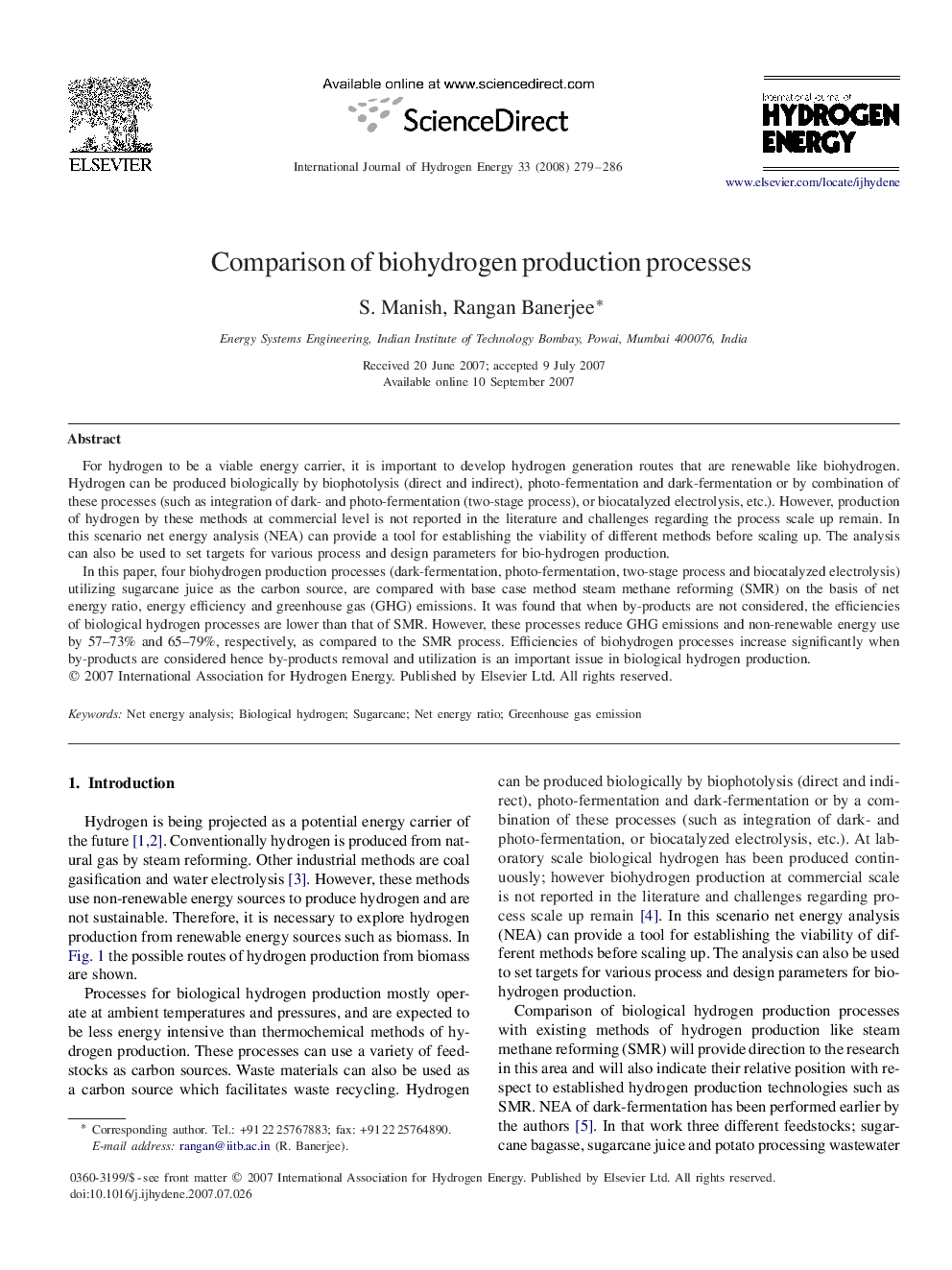| Article ID | Journal | Published Year | Pages | File Type |
|---|---|---|---|---|
| 1279464 | International Journal of Hydrogen Energy | 2008 | 8 Pages |
For hydrogen to be a viable energy carrier, it is important to develop hydrogen generation routes that are renewable like biohydrogen. Hydrogen can be produced biologically by biophotolysis (direct and indirect), photo-fermentation and dark-fermentation or by combination of these processes (such as integration of dark- and photo-fermentation (two-stage process), or biocatalyzed electrolysis, etc.). However, production of hydrogen by these methods at commercial level is not reported in the literature and challenges regarding the process scale up remain. In this scenario net energy analysis (NEA) can provide a tool for establishing the viability of different methods before scaling up. The analysis can also be used to set targets for various process and design parameters for bio-hydrogen production.In this paper, four biohydrogen production processes (dark-fermentation, photo-fermentation, two-stage process and biocatalyzed electrolysis) utilizing sugarcane juice as the carbon source, are compared with base case method steam methane reforming (SMR) on the basis of net energy ratio, energy efficiency and greenhouse gas (GHG) emissions. It was found that when by-products are not considered, the efficiencies of biological hydrogen processes are lower than that of SMR. However, these processes reduce GHG emissions and non-renewable energy use by 57–73% and 65–79%, respectively, as compared to the SMR process. Efficiencies of biohydrogen processes increase significantly when by-products are considered hence by-products removal and utilization is an important issue in biological hydrogen production.
